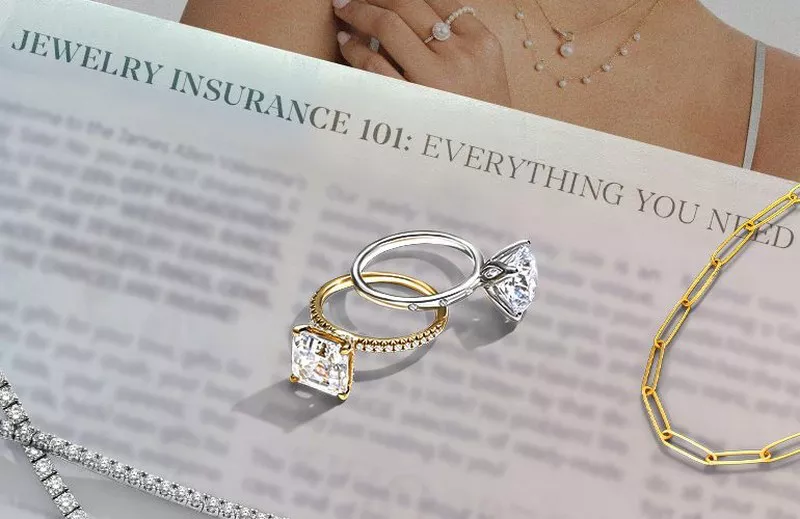Jewelry is often one of the most valuable and sentimental possessions a person can own. Whether it’s an engagement ring, a family heirloom, or a luxury watch, insuring these items ensures they are financially protected in the event of theft, loss, or damage. But how much does jewelry insurance cost? This article will explore the factors that influence the price of jewelry insurance, typical cost ranges, and what coverage entails.
What is Jewelry Insurance?
Jewelry insurance provides coverage for items such as rings, bracelets, necklaces, watches, and more. It protects against financial loss in case your jewelry is stolen, lost, or damaged. This specialized insurance can be purchased as a standalone policy or added as a rider to an existing homeowners or renters insurance policy.
Why is Jewelry Insurance Important?
Jewelry can hold significant financial and emotional value. In the event of a loss, having insurance ensures that the item can be replaced or repaired without a major financial setback. Without insurance, the cost of replacing an expensive piece of jewelry could be overwhelming.
Factors That Affect the Cost of Jewelry Insurance
The cost of insuring jewelry varies depending on several factors. Understanding these factors can help you estimate how much you will pay for jewelry insurance.
1. Value of the Jewelry
The most significant factor in determining the cost of jewelry insurance is the value of the item. Higher-value items naturally require more expensive premiums because the cost to replace or repair them is greater. Insurance companies often require appraisals to determine the value of your jewelry before offering coverage.
2. Type of Jewelry
Different types of jewelry may have different rates. For example, engagement rings or antique heirlooms might carry higher premiums due to their uniqueness and the potential difficulty of replacement.
Engagement Rings: Often more expensive to insure due to their high value and frequency of claims.
Antique Jewelry: Special insurance considerations may be needed due to the age and uniqueness of the piece.
Luxury Watches: These can be costly to replace, leading to higher insurance premiums.
3. Location
Where you live can have a significant impact on your insurance premium. If you reside in an area with a high crime rate, especially for theft, you may pay more for jewelry insurance. Urban areas tend to have higher premiums than rural areas because of higher theft rates.
4. Type of Coverage
Jewelry insurance policies can vary in terms of the coverage they provide. Some policies may cover only theft, while others may cover a broader range of scenarios, including accidental loss, damage, and mysterious disappearance.
Comprehensive Coverage: Covers theft, loss, and damage, including accidental incidents such as dropping a ring down the drain.
Theft-Only Coverage: Typically cheaper but limits coverage to theft alone.
5. Deductibles
The deductible is the amount you pay out-of-pocket before the insurance coverage kicks in. A higher deductible will lower your premium but will require you to pay more if you need to file a claim. Some policies allow for customizable deductibles, allowing you to choose how much risk you’re willing to take on.
6. Claims History
Your history of filing claims can influence your premium. If you’ve made multiple claims in the past, insurers may view you as a higher risk, and you may face higher premiums.
7. Appraisal and Documentation
Insurance providers require proper documentation, such as a recent appraisal, to assess the value of the jewelry. Frequent appraisals help maintain accurate coverage but can also affect premiums as the value of jewelry can fluctuate.
How Much Does Jewelry Insurance Typically Cost?
The average cost of jewelry insurance is generally between 1% and 3% of the item’s appraised value per year. This means that for a piece of jewelry valued at $5,000, you could expect to pay between $50 and $150 per year for coverage. However, this range can vary based on the factors mentioned above.
Examples of Jewelry Insurance Costs:
$1,000 Engagement Ring: $10 to $30 per year.
$5,000 Diamond Necklace: $50 to $150 per year.
$10,000 Luxury Watch: $100 to $300 per year.
Impact of Location on Cost:
New York City: A $5,000 engagement ring might cost around $100 to $200 annually due to the higher crime rate.
Rural Texas: The same ring might only cost around $50 to $100 per year due to lower risk factors.
What Does Jewelry Insurance Cover?
Understanding what is covered by a jewelry insurance policy is crucial. Most policies cover a range of scenarios, though coverage details can vary between insurers.
1. Theft
If your jewelry is stolen, either from your home or elsewhere, most policies will cover the replacement cost, up to the insured amount.
2. Loss
Accidental loss is another common form of coverage. If you lose your jewelry, for instance, dropping a ring down a drain or misplacing it, the insurance policy should cover it.
3. Damage
Jewelry can be damaged in various ways, from wear and tear to accidental incidents like cracking a stone. Comprehensive insurance policies often include coverage for repairs or replacements due to damage.
4. Mysterious Disappearance
In cases where jewelry goes missing without a clear explanation, such as being misplaced or lost in an unknown manner, some policies include coverage for this scenario.
5. Worldwide Coverage
Many policies offer worldwide coverage, meaning your jewelry is protected no matter where you are. This is particularly useful for those who travel frequently and want to ensure their valuables are covered internationally.
What’s Not Covered by Jewelry Insurance?
While jewelry insurance provides extensive coverage, there are exclusions to be aware of. Knowing what is not covered can help avoid surprises if you need to file a claim.
1. Wear and Tear
Damage due to regular wear and tear or aging is not typically covered by jewelry insurance. For example, if a stone becomes loose over time or a chain wears out, you will be responsible for the cost of repairs.
2. Manufacturer Defects
Issues caused by flaws in the jewelry’s design or craftsmanship are usually not covered by insurance. These problems are typically addressed by the jeweler or manufacturer’s warranty.
3. War and Natural Disasters
Most jewelry insurance policies exclude coverage for loss or damage due to war or natural disasters like floods and earthquakes. Special insurance riders may be needed to protect against these risks.
See Also: What’s Important About Renters Insurance?
How to Insure Your Jewelry
Getting jewelry insured is a straightforward process. Here’s how to go about it:
Step 1: Get Your Jewelry Appraised
The first step in insuring your jewelry is obtaining a professional appraisal. This helps determine the accurate value of the item. Make sure to update appraisals regularly to reflect changes in the item’s market value.
Step 2: Choose an Insurance Provider
You can insure jewelry either through a standalone jewelry insurance provider or by adding a rider to your existing homeowners or renters insurance. Compare policies to find the best coverage and rates.
Step 3: Provide Necessary Documentation
When applying for jewelry insurance, you’ll need to provide documentation such as the appraisal, purchase receipt, and photographs of the item.
Step 4: Select Coverage and Deductible
Choose the level of coverage that best suits your needs. You’ll also need to decide on a deductible that balances premium cost with potential out-of-pocket expenses.
Step 5: Pay the Premium
Once you’ve selected your coverage, you can finalize the policy by paying the annual premium. Some insurers allow monthly or quarterly payment plans.
Should You Insure Your Jewelry?
Whether or not you should insure your jewelry depends on its value and your personal risk tolerance. If you own high-value or sentimental pieces, the peace of mind that comes with insurance may be worth the annual cost. For lower-value items, it may make more sense to self-insure by setting aside funds for potential replacement costs.
When is Jewelry Insurance Essential?
High-Value Jewelry: Expensive or rare pieces should be insured to avoid a significant financial loss.
Sentimental Value: Even if the monetary value isn’t high, sentimental pieces may be worth insuring.
Frequent Travelers: If you often travel with valuable jewelry, worldwide coverage provides added protection.
Conclusion
Jewelry insurance is an essential tool for protecting valuable and sentimental items. While the cost varies depending on several factors, the typical annual premium ranges between 1% and 3% of the item’s value. By understanding the factors that affect the cost and what is covered, you can make an informed decision about how to best protect your treasured possessions.
In short, jewelry insurance provides peace of mind and financial security. Whether it’s a family heirloom or a luxury timepiece, insuring your jewelry ensures that you can replace or repair these cherished items without a major financial burden.
[inline_related_posts title=”You Might Be Interested In” title_align=”left” style=”list” number=”3″ align=”none” ids=”3603,3517,3467″ by=”categories” orderby=”rand” order=”DESC” hide_thumb=”no” thumb_right=”no” views=”no” date=”yes” grid_columns=”2″ post_type=”” tax=””]

































